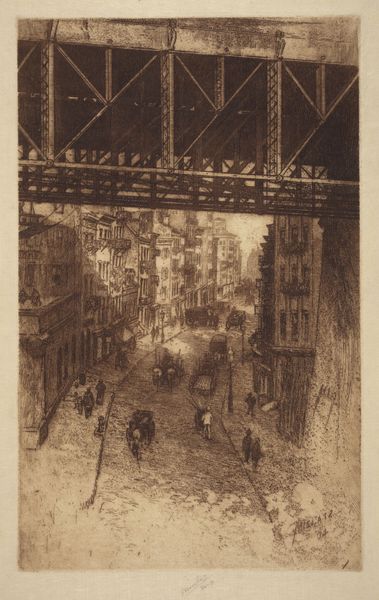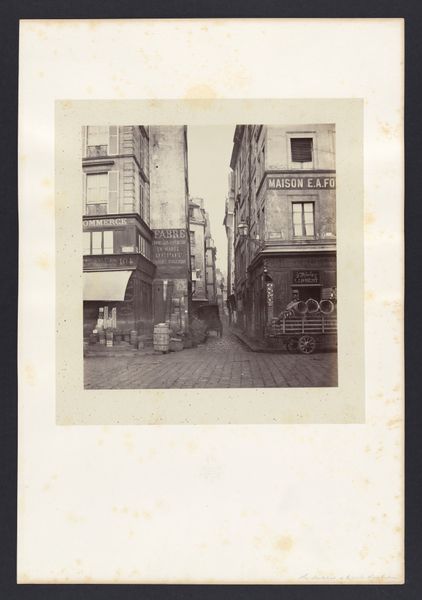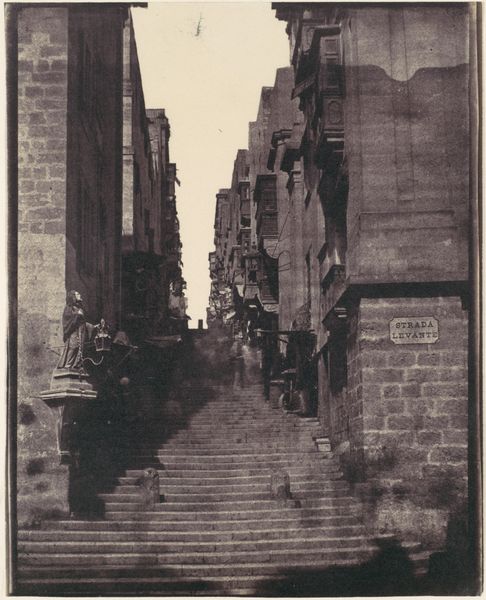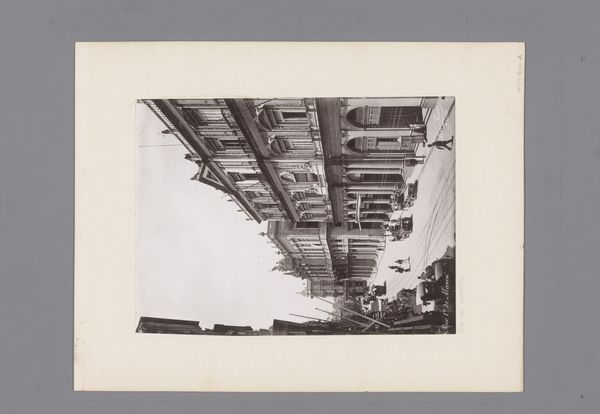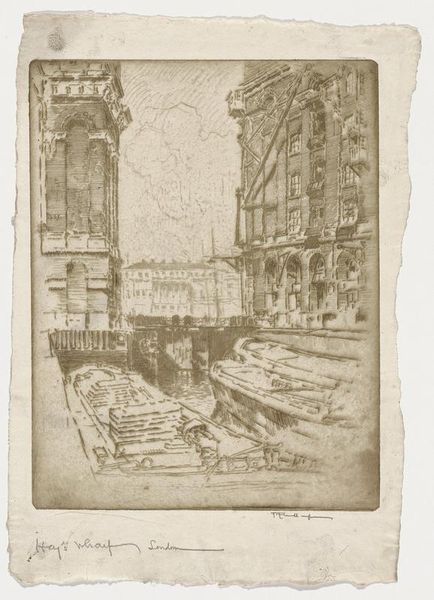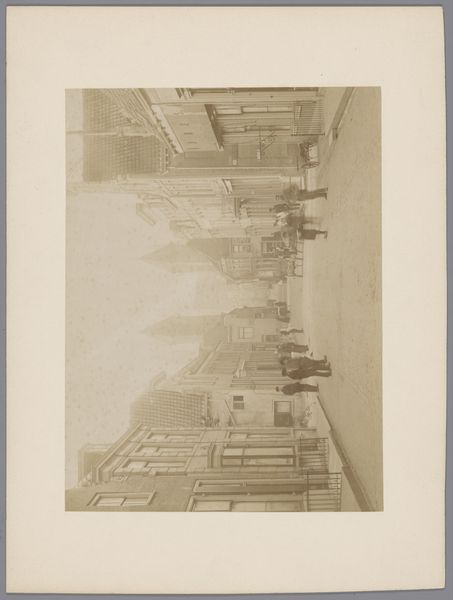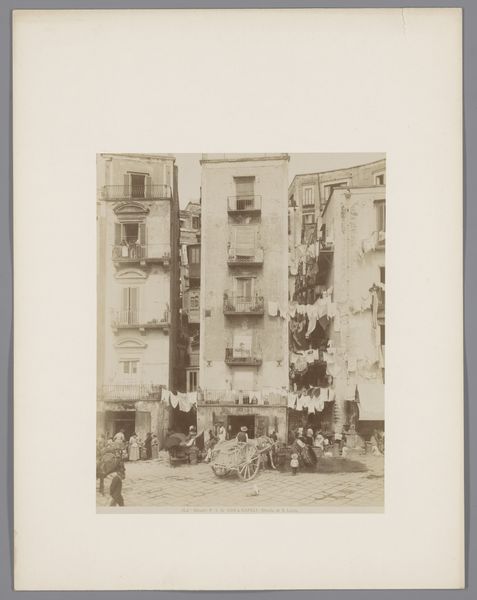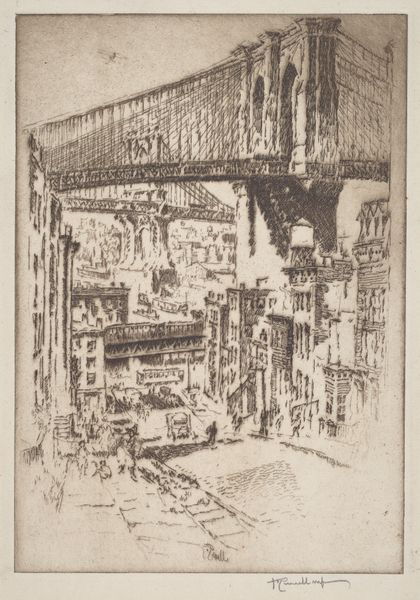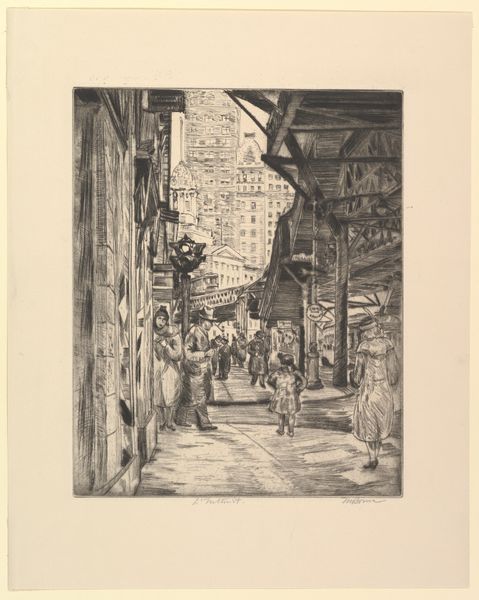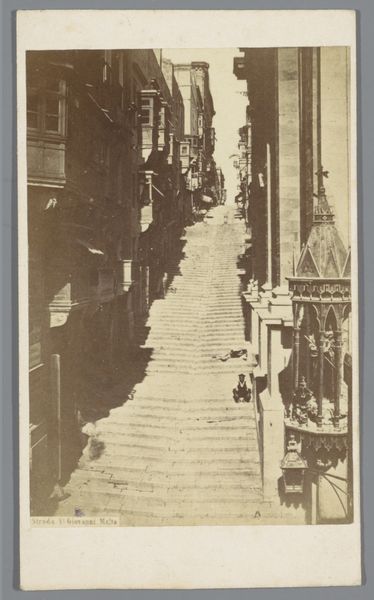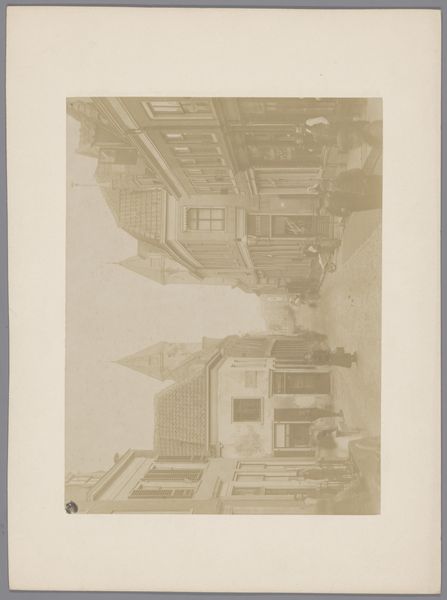
Dimensions: 305 × 190 mm (image/plate); 364 × 244 mm (sheet)
Copyright: Public Domain
Editor: Here we have Charles Mielatz’s "Cherry Street," an etching made in 1904. The elevated train tracks really dominate the scene; it almost feels oppressive looking down the street. What do you see in this piece? Curator: That stark geometry cutting across the organic chaos of the street – for me, that speaks volumes. It's a potent symbol of the industrial age crashing into everyday life, isn't it? The bridge, rendered so meticulously, becomes an almost brutal icon. Consider how it both connects and divides, creating literal and figurative shadows. What emotional weight does that contrast carry, do you think? Editor: I hadn’t thought of the shadows in that way! It’s not just visual, but almost… oppressive, like the bridge is weighing down the street. Do you think Mielatz meant for it to feel that way? Curator: Intention is a tricky thing, isn't it? But we can look at the symbolism present. Bridges often represent connection, transition. Here, though, it feels like that promise is tainted by the grime and noise, by the sheer scale of the industrial. It alters the street below; notice how small it makes the figures seem? They are dwarfed by progress. The artist places us beneath this looming symbol, inviting us to reflect on its impact, on who benefits, who pays the price. What remains unspoken can sometimes shout the loudest. Editor: That's really interesting. So, by contrasting the industrial bridge and the people walking on the street, the artist creates a sort of commentary about progress and its impact on society. Curator: Precisely. Consider this not just as a record of a place but as a document infused with complex emotions about modernity. We get a visual record, of course, but that record contains so much cultural memory. Editor: I’m starting to see how much these visual symbols can communicate beyond just the surface level of the image. Thank you! Curator: My pleasure! Hopefully, now you will perceive those subtle echoes whenever you look at images of similar scenes of rapid industrial growth.
Comments
No comments
Be the first to comment and join the conversation on the ultimate creative platform.
